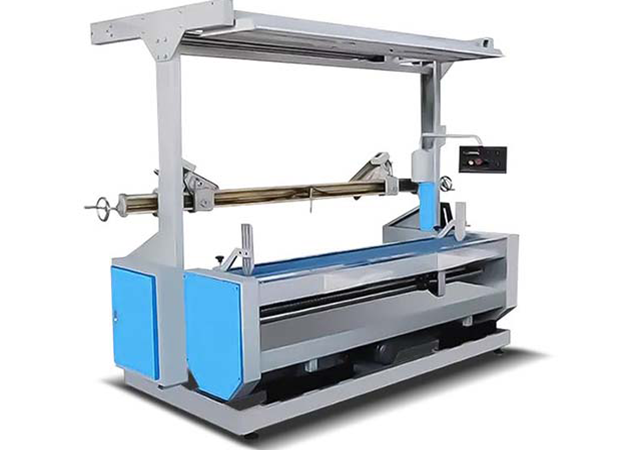With the advent of the digital age, companies have harnessed the power of Artificial Intelligence (AI) to streamline their processes, marking a significant shift towards efficiency and automation.
One notable sector that has embraced the fusion of technology and manufacturing is the textile industry, where fabric rolling machines have become indispensable. These machines, equipped with advanced features and AI integration, revolutionize the way fabrics are handled, offering a range of benefits for textile factories.
Introduction to Smart Fabric Rolling Machines
Smart fabric rolling machines represent a leap forward in efficiency and cost-effectiveness for textile operations. Beyond their ability to roll up various types of fabric, including quilts, blankets, and rugs, these machines leverage AI to optimize the entire rolling process. Selecting and utilizing a fabric rolling machine has become a critical decision for textile factories, shaping the landscape of modern manufacturing.
Effective Implementation Strategies
Implementing fabric rolling machines seamlessly requires careful consideration of best practices tailored to the unique challenges faced by each company. Here are some guidelines for both sales administrators and production employees in the manufacturing sector:
Preparation for Rolling:
Before feeding fabric into the machine, ensure it is free of wrinkles. Wrinkled fabric may hinder the machine's grip, resulting in a suboptimal rolling outcome.
Aligning Fabric:
Utilize the machine's guide to maintain proper alignment as the fabric is fed into the rolling mechanism. Slow and steady feeding prevents the formation of creases or folds.
Tension Management:
Monitor the fabric's tightness inside the machine. Some machines offer tensioning knobs for manual adjustment, while others automatically regulate tension based on the fabric's volume. Keeping the fabric tight ensures a smooth rolling process.

Cooling Period:
After completing the rolling process, allow the machine to sit idle for a few minutes. This enables the heat generated during operation to set any residual wrinkles.
Tracing the History of Fabric Rolling Machines
The fabric rolling machine, a pivotal tool in fabric production, traces its roots back to the late 1800s. Its invention marked a revolutionary shift in the textile industry, replacing the labor-intensive and time-consuming manual rolling process. This innovation significantly boosted efficiency and productivity, catalyzing advancements in fabric manufacturing.
Evolution and Application Beyond Textiles
Since its inception, the fabric rolling machine has undergone iterative improvements, expanding its applications beyond textiles. Today, these machines find utility in diverse industries, including paper production, steel manufacturing, and ceramic tile production, illustrating the versatility and adaptability of this technology.
Key Considerations in Fabric Rolling Machine Design
To ensure the seamless operation of fabric rolling machines, thoughtful design considerations are crucial. Key factors include:
Width of Rolling Fabric:
Tailor the machine's design to accommodate the width of the fabric, influencing the size of rolls and production efficiency.
Type of Rolling Fabric:
Account for the diverse nature of fabrics, ensuring the machine can handle various weights and thicknesses smoothly.
Layers of Rolling Fabric:
Consider the number of fabric layers the machine can handle without compromising production efficiency or damaging the quality of the rolls.
The fabric rolling machine stands as an indispensable tool for modern manufacturing, offering unparalleled efficiency in cutting and rolling fabric. As technology evolves, these machines continue to play a crucial role, adapting to the needs of sewers and quilters alike. Investing in a fabric rolling machine is a strategic decision, promising time savings and enhanced productivity. To make an informed choice, thorough research into the available brands and models is essential, ensuring that the selected machine aligns with specific operational requirements. Embracing the era of AI and automation, fabric rolling machines exemplify the synergy between human ingenuity and technological progress.




